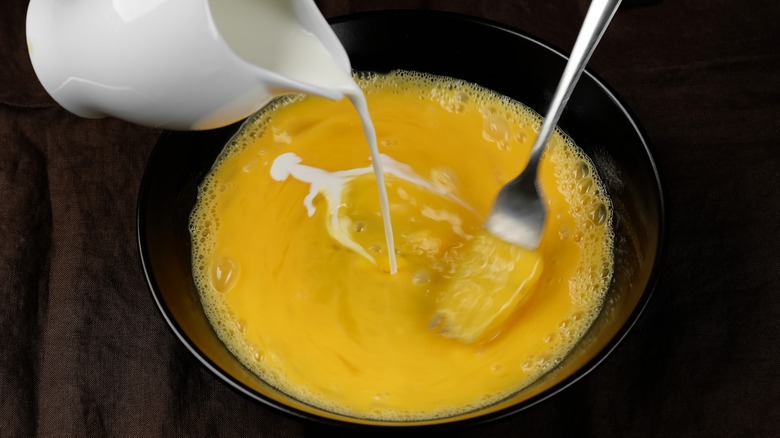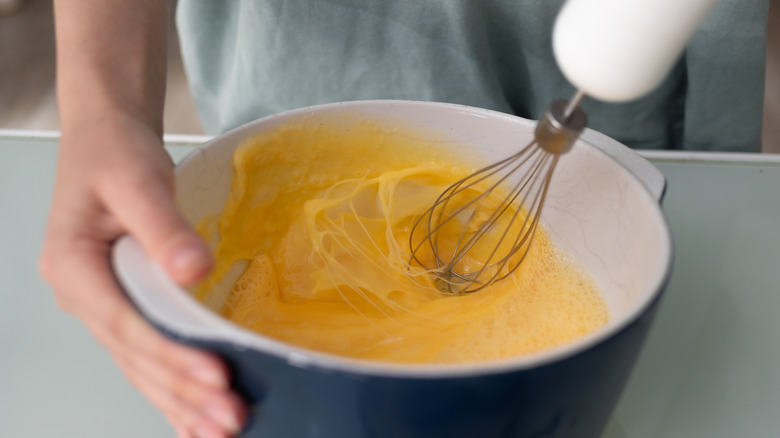Well-Beaten Vs. Slightly Beaten Eggs: What's The Difference?
There are at least 14 basic ways to make eggs, hundreds of different seasonings and flavorings that go along with them, and thousands of recipes that call for eggs as the glue (an emulsifier) that holds ingredients together. Eggs can also be used to make various shapes and textures, depending on what you're trying to achieve. For example, you can whip egg whites together with sugar to form a beautiful meringue as a topping for tarts and pies. The process works because the egg whites are nine-tenths water and one-tenth protein. When you whip egg whites with an electric mixer, the water forms air pockets in the protein, giving it a light and fluffy structure.
The same process occurs when you begin to mix whole eggs together, and the eggs will continue to alter their consistency the longer you mix them. Slightly beaten eggs will look and feel different than well-beaten eggs. Luckily, you can see when this happens as you prep them for your recipe.
Well-beaten eggs are rigid, uniformly yellow, and sculptable
Slightly beaten eggs will show some variations in color simply because the yolks haven't completely mixed with the whites. You can combine these in under a minute with a fork to make scrambled eggs, create an omelet, or add them to cake mixes because the eggs maintain their liquid form.
Well-beaten eggs need a bit more work. Use an electric mixer on high for at least half a dozen minutes to produce well-beaten eggs. The mixture will look uniformly light yellow, and it will be slightly rigid because the proteins have thoroughly combined with the water. Well-beaten eggs form a mousse-like texture and become more rigid. You could even start to sculpt them into miniature mountains and valleys as you work with them, according to The Spruce Eats.
When reading directions for beating eggs, pay attention to how long you need to mix them and what they should look like when you're done, notes The Spruce Eats. You can also tell by the purpose of the eggs as to how long you need to beat them. For instance, slightly beaten eggs are perfect for adding to dough and flour for baking cookies, cakes, and pies. However, well-beaten eggs come in handy when eggs need to be cooked as a main ingredient rather than an emulsifier, such as when making custard or mousse, according to Crafty Baking.

